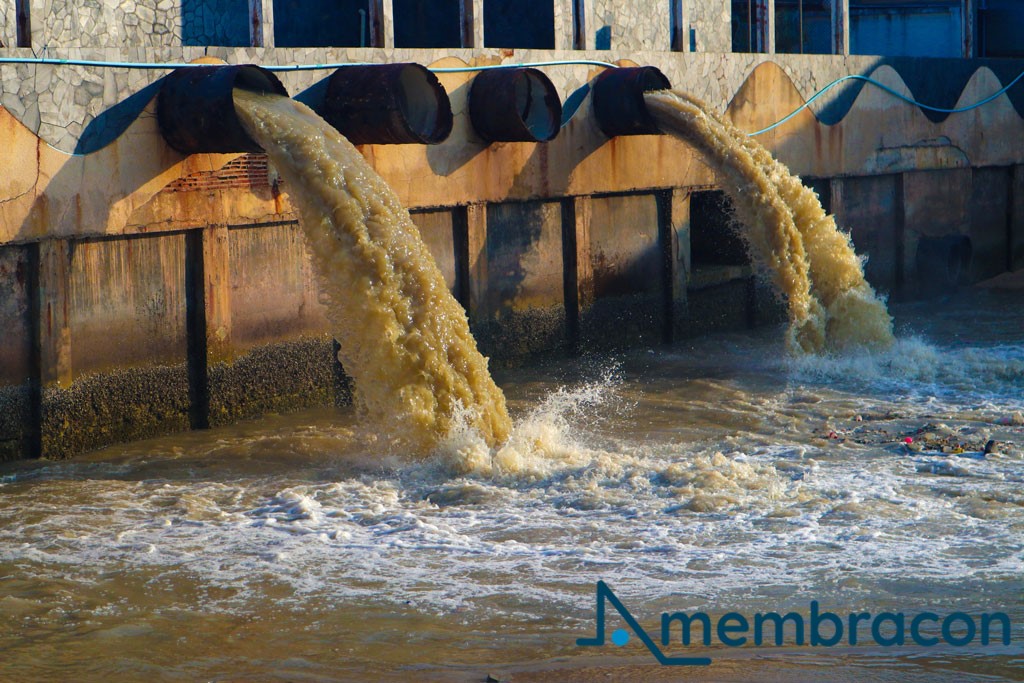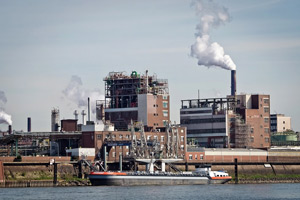Industrial Waste Water Treatment-- Protect the Environment with Expert Water Treatment Services
Industrial Waste Water Treatment-- Protect the Environment with Expert Water Treatment Services
Blog Article
Challenges and Solutions in Industrial Waste Water Treatment
The therapy of industrial wastewater offers a diverse range of difficulties, ranging from strict regulatory compliance to the complexities of cost administration and technological restrictions. The variability in waste make-up further makes complex the performance of conventional therapy methods, often leading to risen functional expenses. Emerging remedies such as sophisticated oxidation processes and ingenious funding models show guarantee in dealing with these issues. As industries face the demand for lasting methods, the question remains: what methods will inevitably cause an equilibrium in between conformity, cost-efficiency, and environmental responsibility?
Regulatory Conformity Challenges
Exactly how can industrial centers navigate the complex landscape of governing conformity in wastewater treatment? The regulatory framework governing wastewater administration is complex, often varying by jurisdiction and kind of industry.
To properly manage these conformity obstacles, centers should apply durable tracking and reporting systems that ensure real-time data collection and evaluation. Routine audits and threat analyses can determine potential conformity spaces, enabling aggressive modifications in treatment processes. Employee training programs focusing on regulatory expertise and ideal methods are important to cultivate a culture of conformity within the company.
Additionally, involving with regulatory firms can offer beneficial insights and clarify uncertain laws. Facilities might likewise gain from talking to environmental professionals that focus on wastewater treatment compliance, making sure that they stay informed of developing laws. By adopting these techniques, industrial facilities can not just fulfill conformity demands but also enhance their functional efficiency and ecological stewardship.
Cost and Financial Barriers
Browsing regulative conformity in wastewater treatment typically provides considerable monetary obstacles for commercial facilities. The costs connected with carrying out needed treatment innovations, keeping conformity with rigorous policies, and handling functional costs can be intimidating. Lots of companies encounter high preliminary capital investment for the construction or updating of wastewater therapy plants, which might stress budgets, especially for small and medium-sized enterprises.
Additionally, continuous functional prices, consisting of upkeep, labor, and chemical inputs, add to the financial concern. The changability of changing energy rates and the potential demand for extra investments to satisfy advancing regulations worsen these financial pressures. In most cases, the absence of financial motivations or assistance from federal government bodies makes it even a lot more tough for services to justify investments in innovative therapy systems.
Additionally, the economic viability of wastewater therapy remedies is often questioned, especially for industries with tight earnings margins. As a result, it is vital for commercial centers to discover cost-efficient methods, such as adopting cutting-edge funding choices, involving in collaborations, and leveraging arising innovations that can help mitigate these financial obstacles while ensuring conformity with environmental criteria.

Technological Limitations
Numerous technological constraints prevent the performance of commercial wastewater treatment procedures. One substantial challenge is the inadequacy of existing therapy innovations to attend to complicated pollutants. Several standard methods, such as turned on sludge and chemical precipitation, battle with the removal of arising contaminants, consisting of microplastics and pharmaceuticals. This limitation commonly causes the discharge of inadequately treated water, which can have destructive ecological effects.
Additionally, the scalability of treatment innovations postures a challenge. While some innovative techniques, like membrane layer purification or innovative oxidation, reveal promise in regulated atmospheres, their execution on a bigger scale can be much too costly and practically challenging. Upkeep and operational complexities better complicate the adoption of these systems, specifically for smaller industries with restricted technological experience.
The integration of real-time tracking modern technologies also stays not enough in many treatment facilities. Without efficient surveillance systems, drivers can not sufficiently examine therapy efficiency or spot prospective failings, bring about inconsistent effluent quality. Dealing with these technological limitations through research and development, alongside investment in innovative remedies, is crucial for boosting the efficiency of commercial wastewater therapy and making sure regulative compliance.
Variability in Waste Composition
In the check my reference realm of industrial wastewater therapy, the irregularity in waste structure offers a powerful difficulty. Industries generate wastewater with varied attributes, affected by elements such as production procedures, basic materials, and operational practices. This diversification makes complex the treatment process, as conventional read here systems often battle to successfully attend to the vast array of toxins present.
As an example, wastewater from food processing might have high degrees of organic issue, while effluents from chemical production could consist of hazardous materials and heavy metals. This difference necessitates versatile treatment techniques to guarantee conformity with ecological laws and protect public health. Additionally, fluctuations in waste composition can take place with time, influenced by changes in production timetables, maintenance tasks, or the introduction of brand-new products.

Innovative Therapy Solutions
Innovative treatment solutions are necessary for dealing with the intricacies of industrial wastewater administration. Traditional techniques often drop brief in successfully getting rid of a wide variety of contaminants, especially in centers with diverse effluent streams. Recent improvements focus on integrating sophisticated technologies to improve therapy performance and sustainability.
One promising technique is using advanced oxidation procedures (AOPs), which leverage powerful oxidants to break down natural pollutants. AOPs, including photocatalysis and ozonation, can dramatically reduce harmful compounds and enhance effluent quality. Additionally, membrane bioreactor (MBR) innovation has actually obtained grip, incorporating biological treatment with membrane filtering, leading to high-grade effluent and reduced footprint.
Another innovative service is the application of resource healing systems. Strategies like anaerobic food digestion not just treat wastewater yet likewise create biogas, which can be harnessed as a sustainable power source. Furthermore, the adoption of expert system and equipment learning models can optimize therapy procedures by anticipating variations in wastewater structure, thus enhancing functional performance.
These ingenious solutions not just address regulatory conformity but likewise promote environmental sustainability, leading the method for a more resilient and reliable industrial community.
Conclusion
In verdict, resolving the difficulties of industrial wastewater therapy requires a complex technique that integrates governing compliance, price administration, and technological innovations. Innovative remedies, such as sophisticated oxidation procedures and membrane layer bioreactor modern technology, offer paths to enhance treatment performance. Real-time surveillance systems and joint interaction with regulatory companies can advertise sustainable methods while minimizing economic pressures. A dedication to continual improvement in therapy approaches will inevitably add to the effective administration of commercial wastewater and ecological protection.
The treatment of industrial wastewater provides a diverse range of difficulties, varying from rigid regulative compliance to the intricacies of expense management and technical limitations. Industrial Waste Water Treatment.Browsing regulative conformity in wastewater therapy frequently presents view website significant monetary obstacles for commercial centers. Resolving these technical restrictions with research study and development, alongside financial investment in cutting-edge remedies, is vital for boosting the efficiency of commercial wastewater treatment and guaranteeing regulatory conformity
Wastewater treatment facilities must spend in robust monitoring systems and flexible therapy modern technologies capable of accommodating differing influent attributes.In conclusion, addressing the obstacles of industrial wastewater therapy calls for a diverse method that incorporates regulative compliance, price administration, and technical improvements.
Report this page